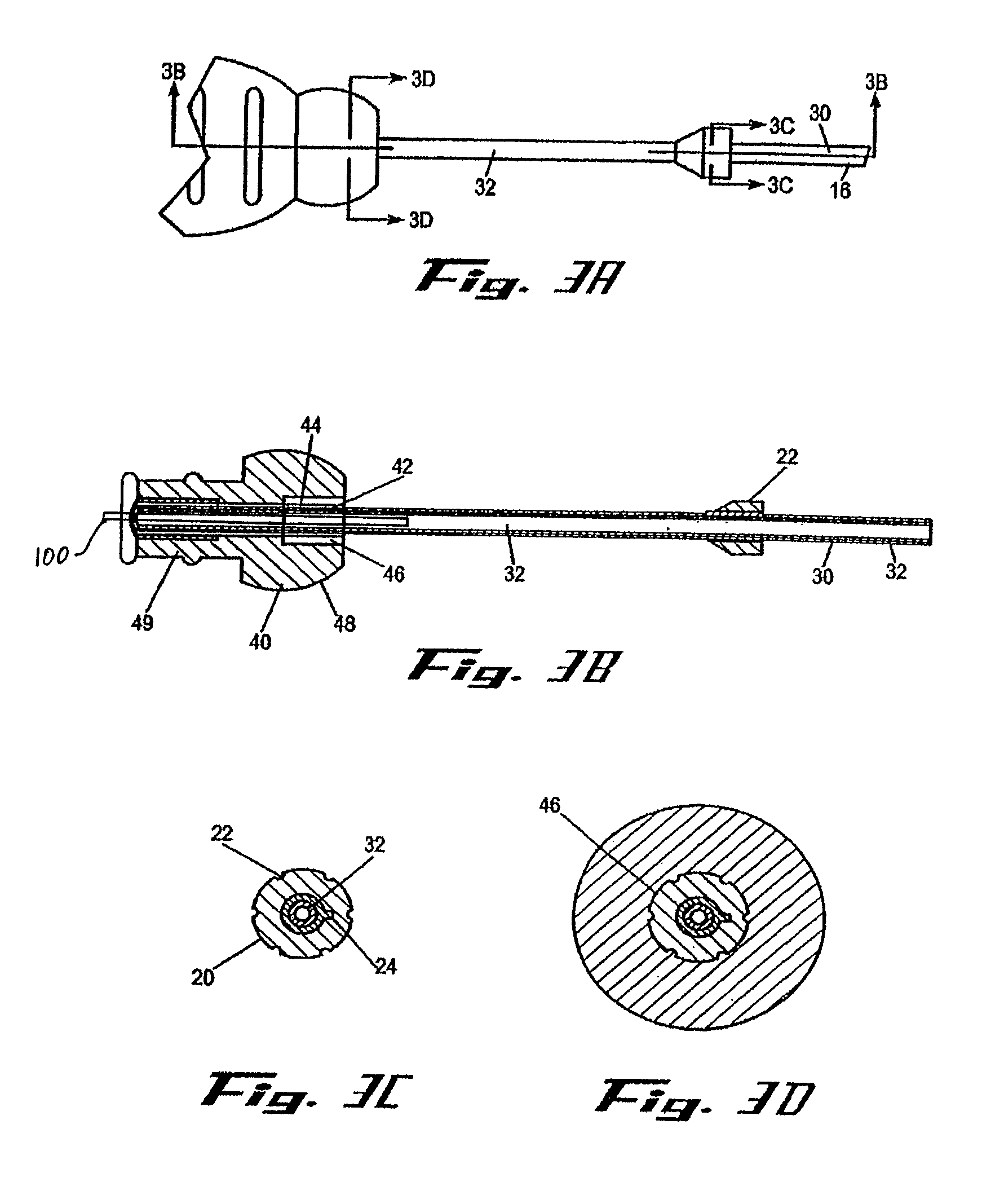Medical appliance delivery apparatus and method of use
a technology of stent and device, which is applied in the field of medical devices, can solve the problems of not having a safety mechanism to prevent excessive deployment of stent, no conventional way of correcting errors short of removing stent, and generally not being able to realign with respect to stent, etc., and achieves the effect of convenient and repeatable delivery of stents
- Summary
- Abstract
- Description
- Claims
- Application Information
AI Technical Summary
Benefits of technology
Problems solved by technology
Method used
Image
Examples
Embodiment Construction
[0009]It is a principal objective of an exemplary stent deployment apparatus in accordance with the present invention to provide a device that can facilitate the precise delivery of stents in a safe and repeatable fashion. In the furtherance of this and other objectives, a preferred deployment apparatus allows the physician to concentrate on correct placement without having to estimate extent of deployment. In particular, in a preferred embodiment, the present deployment apparatus has a physical safety mechanism that limits deployment to the critical deployment point (i.e., ˜60%). The critical deployment point may range form 5% to 95% but is preferably about 60%. At this point, if the physician is satisfied with placement, she can engage the safety means to what we refer to as the Proceed Orientation (PO) and fully deploy the stent. It is preferred that when the safety mechanism is engaged to the PO, a physical twist and a possible audible indicator sounds to inform the physician th...
PUM
 Login to View More
Login to View More Abstract
Description
Claims
Application Information
 Login to View More
Login to View More - R&D
- Intellectual Property
- Life Sciences
- Materials
- Tech Scout
- Unparalleled Data Quality
- Higher Quality Content
- 60% Fewer Hallucinations
Browse by: Latest US Patents, China's latest patents, Technical Efficacy Thesaurus, Application Domain, Technology Topic, Popular Technical Reports.
© 2025 PatSnap. All rights reserved.Legal|Privacy policy|Modern Slavery Act Transparency Statement|Sitemap|About US| Contact US: help@patsnap.com



